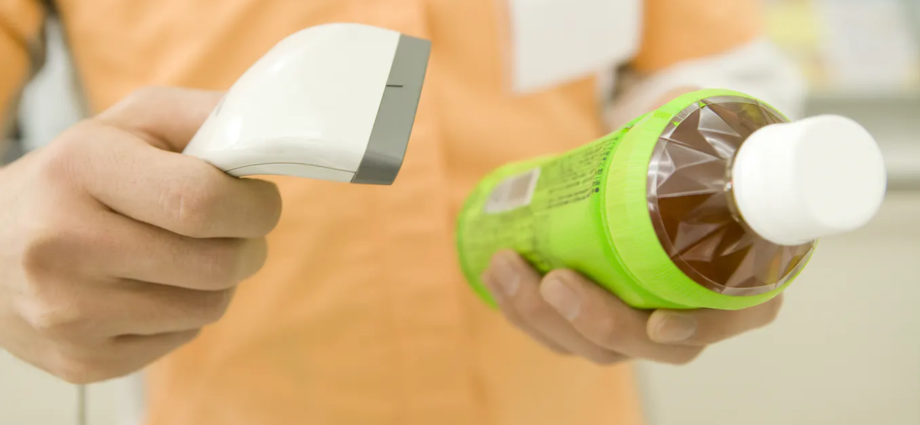How businesses could cut plastic waste with a track and trace system
Photo by TAGSTOCK1/ Shutterstock
Katherine Ellsworth-Krebs, Lancaster University
February 16, 2021
While many businesses ground to a halt at the start of the pandemic, the market for disposable packaging was forecast to grow by 5.5% as the demand for single-use plastics soared. Before COVID-19, the market was already projected to grow by 4% a year until 2027. As a result of all the things we buy and throw away, the average person in the UK is responsible for 99kg of plastic waste each year.
When people talk about reducing plastic waste, they tend to have a narrow picture of the possibilities, like using reusable bottles or shopping bags. More often than not, the focus is on what consumers can do. But to prevent tonnes of plastic being made just to be thrown away, businesses need to ensure people can reuse and refill all their packages and products, from ready meals and soft drinks to shampoo and eyeliner.
This would mean a system where people don’t buy new disposable plastic containers, but have these collected by retailers and manufacturers to be refilled and then returned to the shop floor. For many products, this same container would be reused hundreds of times. This is not something customers can make happen on their own – it requires manufacturers, retailers and health-and-safety regulators working together.

Reverse supply chains
Currently, businesses take raw materials, make a product and distribute it to their customers in single-use packaging that is then discarded. In a circular system where the plastic is reused, businesses would also have to collect, clean, store, refill and redistribute that packaging. All these steps cost money and create new risks for the business.
Health and safety is one of the biggest concerns for retailers of food, drinks and cosmetics. In a linear supply chain, compliance with regulators is relatively simple. Each product package, whether it’s a shampoo bottle or a ready-made curry tray, has to have a unique label in case there is a bad batch that must be recalled due to an unlabelled allergen or bacterial contamination. Packaging can be marked once when it’s filled and then discarded. But for a circular economy, there needs to be a way to relabel different batches of products distributed in the same container.
Nivea launched a refill station for shower gel in Hamburg, Germany in 2020. Customers return their shampoo bottle, refill it in the shop, and a machine prints out a sticker to identify the product batch. This still assumes customers will do much of the work, including adding and removing stickers to ensure their reusable product meets health and safety requirements.
Ensuring that everyone can easily reuse products will require more elegant solutions. The first step is for businesses to track their packaging with a digital product passport. This is essentially a unique QR code that can be scanned at key points on the product’s journey – when it’s returned to the shop, when it’s cleaned and refilled by the manufacturer at a warehouse, and when it’s returned to a shop or ordered online. The packaging will be scanned hundreds of times, allowing businesses to show that they are complying with health-and-safety standards. And each package can be identified and recalled if there are any contaminated batches of shampoo or curry.

New business models
Digital product passports can also help businesses figure out if reusable packaging is profitable. Calculating the cost of a single-use package is simple. A cardboard takeaway box may cost 20 pence to make and that money goes into the cost of your takeaway meal. With reusable packaging, businesses could recoup the costs and even save money if the curry packaging is reused and refilled enough times.
But reusable packaging will probably cost more per unit because it will need to be made more durable. Reusable takeaway containers could cost 25 times more than disposable ones to make. But this doesn’t mean that the business will recoup the full cost and begin to make a profit if the container is returned and refilled 25 times. There are additional costs, such as labour and energy that are required to collect, store, clean and refill the packaging. While these things can be calculated to determine the cost per use of a reusable package, businesses won’t know the actual price unless they have a way to track their package and find out the return rate. Return rates will vary widely depending on the product, how easy it is to return the package, and even cultural norms. Without investment in tracking, there are very few case studies to turn to.
Reusable packaging presents an array of new risks for businesses. How do you make packaging that can be frozen, dropped and then heated to 200°C in an oven and confidently claim that it can be used 400 times and still be of the same specification as when it was first produced? How can you set up a reverse supply chain so that at least 50% of your shampoo bottles are returned and refilled 400 times?
Because they allow businesses to track how many times different types of packaging can be reused and how often people will return them, digital product passports are the first step to solving both of these challenges. Now businesses need to put these ideas into practice.
Katherine Ellsworth-Krebs, Senior Research Associate in Sustainability, Lancaster University
This article is republished from The Conversation under a Creative Commons license. Read the original article.

